Subscribe to ShahidulNews
![]()
They had risked all to hold on to this moment in history. The scarred negatives, hidden from the military, wrapped in old cloth, buried underground, also bore the wounds of war. These photographers were the only soldiers who preserved tangible memories, a contested memory that politicians fight over, in their battle for supremacy. These faded images, war weary, bloodied in battle, provide the only record of what was witnessed. Nearly four decades later, they speak.
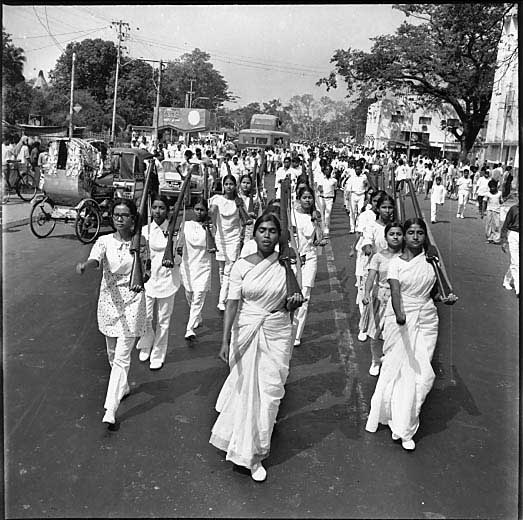
Women marching in the streets of Dhaka. 1971. ? Rashid Talukder/Drik/Majority World
A photographic exhibition and film season that focuses on one of South Asia?s most significant political events: the foundation of Bangladesh as an independent state.
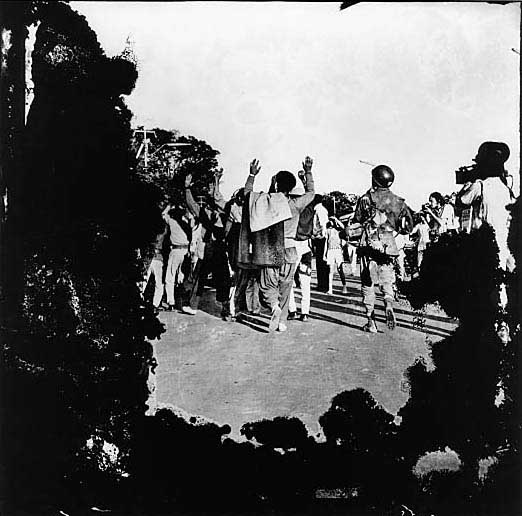 Pakistani soldiers surrendering on the 16th December 1971. ? Aftab Ahmed/Drik/Majority World
Pakistani soldiers surrendering on the 16th December 1971. ? Aftab Ahmed/Drik/Majority World
The Bangladesh war of independence in 1971 was one of the bloodiest conflicts in living memory. In an attempt to crush forces seeking independence for what was then East Pakistan, the West Pakistani military regime unleashed a systematic campaign of violence that resulted in the deaths of thousands of Bangalis. Many of the photographs from the unique collection of the Drik archives will be shown in the UK for the first time.
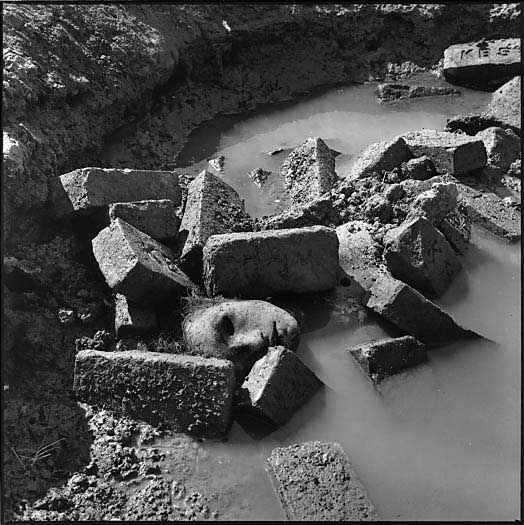 Dismembered head at the Rayerbajar Killing Fields where intellectuals were slaughtered on the 14th December 1971 ? Rashid Talukder/Drik/Majority World
Dismembered head at the Rayerbajar Killing Fields where intellectuals were slaughtered on the 14th December 1971 ? Rashid Talukder/Drik/Majority World
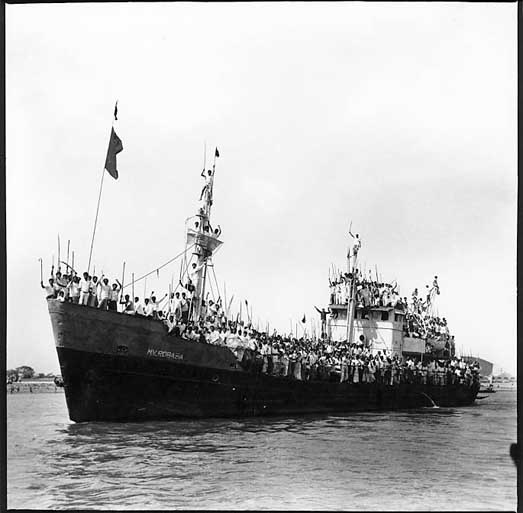 Victorious Mukti Bahini returning home at the end of the war. ? Jalaluddin Haider/Drik/Majority World
Victorious Mukti Bahini returning home at the end of the war. ? Jalaluddin Haider/Drik/Majority World
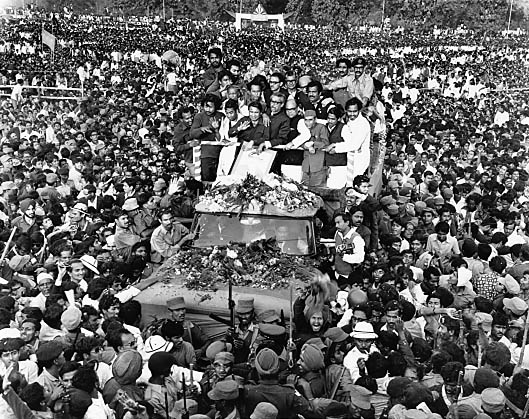 Sheikh Mujibur Rahman on his return to Bangladesh from Pakistan. 10th January 1972 ? Rashid Talukder/Drik/Majority World
Sheikh Mujibur Rahman on his return to Bangladesh from Pakistan. 10th January 1972 ? Rashid Talukder/Drik/Majority World
In 266 days Bangali, hill people and Adivasi resistance fighters and their allies defeated the military forces of Pakistan. The result was the birth of a new nation – Bangladesh – and the dismemberment of Pakistan.
It was only after the 16th of December 1971 when Pakistani troops surrendered in East Pakistan, that Bangladeshis began to realise the scale of the atrocities committed during the previous nine months.
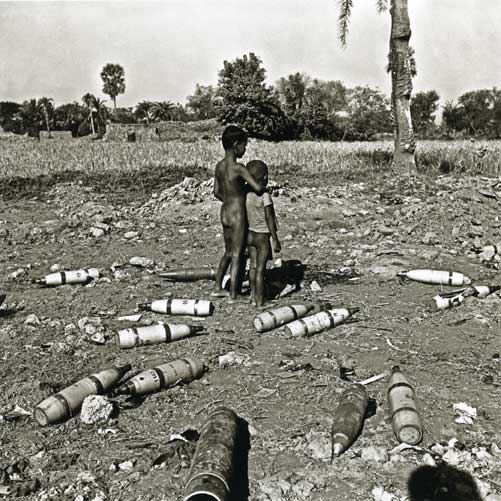 Children amidst shells. ? Abdul Hamid Raihan/Drik/Majority World
Children amidst shells. ? Abdul Hamid Raihan/Drik/Majority World
1971 was a year of national and international crisis in South Asia. The history of Bangladesh is implicitly tied to the partition of India in 1947 and therefore the tragic events of 1971 are linked to Britain?s colonial past. For Bangladesh, ravaged by the war and subsequent political turmoil, it has been a difficult task to reconstruct its own history. It is only during the last few years that this important Bangladeshi photographic history has begun to emerge.
Now decades after the war, Autograph ABP in collaboration with Drik presents a historical photographic overview of Bangladesh 1971 at Rivington Place.
Project Description
A major documentary photographic exhibition of primarily Bangladeshi photographers that focuses on the independence struggle in 1971. The exhibition is produced in partnership with Shahidul Alam, Director of Drik, a media activist and journalist from Bangladesh. This will be the first comprehensive review in the UK of one of the most important conflicts in modern history. It is recognised that over a million people died in 266 days during the struggle for an independent Bangladesh.
UK partner Autograph ABP. Curator Mark Sealy, director of Autograph ABP.
Exhibition open to public April 4th ? 31st May 2008
Press View – Both curators will be available to meet the press 11.30am ? 1pm April 3rd
The exhibition is accompanied by the Bangladesh 1971 Film Season throughout April 2008 in partnership with Rich Mix and The Rainbow Film Society. Please see attached document for full details.
For further information or images, contact Indra Khanna 020 7749 1261 or David A Bailey 020 7749 1264.
Autograph ABP, Rivington Place, London EC2A 3BA.
Notes:
VENUE
Rivington Place
off Rivington Street
London EC2A 3BA
020 7749 1240
April 4th ? 31st May 2008
Open Tuesday – Friday 11am – 6pm
Saturday 12pm – 6pm
Entry is free. Venue is wheelchair accessible.
? Shahidul Alam: Curator, photographer, activist. Gallery Talk (in Bengali) 2pm April 5th
? Mark Sealy: Director of Autograph ABP. Gallery Talk (in English) 6.30pm April 17th
? Many other talks and events to be confirmed
? Bangladesh 1971 Film Season throughout April 2008 in partnership with Rich Mix and The Rainbow Film Society
? Special screening of documentaries and artists? films at Rivington Place to be announced
Photographers included in the exhibition: Abdul Hamid Raihan, Aftab Ahmed, BegArt Collection, Golam Mawla, Jalaluddin Haider, Mohammad Shafi , Naib Uddin Ahmed, Rashid Talukder, Sayeeda Khanom and Bal Krishnan.
—–
press-release-bangladesh-1971.doc

Wish you all the luck & major success in this exhibition!
???????? ???? ????? ?????????? ?? ?????? ??? ????????
I picked up the flyer for this exhibition too late unfortunately. I have however laminated the images (of the women marching and the children amongst ammunition) and tacked them by my mirror anyway.
Really good collection.
Thanks for this informative write-up